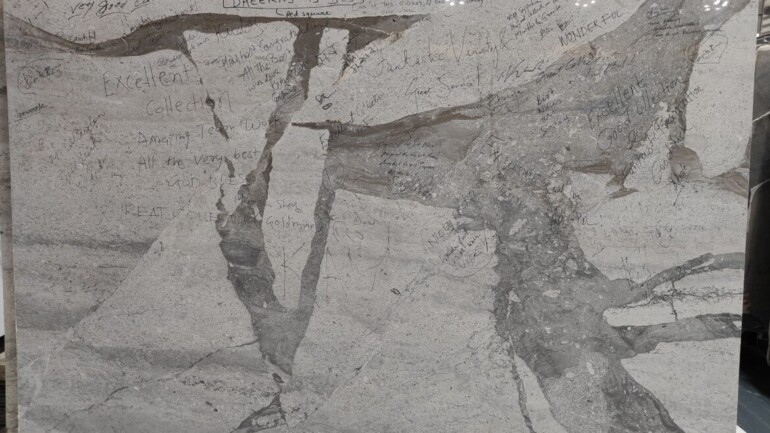In the realm of interior design and architecture, marble is a symbol of elegance, luxury and timeless beauty. From ages, marbles has adorned palaces, monuments, interiors, etc. while capturing the attention of homeowners and designers. The discussion often narrows down to two primary options i.e. imported marble and Indian marble, when it comes to choosing the ideal marble for any project. Making the choice a matter of personal preference, aesthetic appeal and practical consideration, each type of marble has its unique characteristics.
The Allure of Imported Marble
Various countries like Italy, Greece, and Spain from where the imported marble are sourced, is often associated with luxury and individuality. Italian marble is one of the most renowned marble among the prestigious varieties of marble, which includes iconic types such as Statuario, Calacatta and Carrara marbles. These marbles are recognized for their pristine white backgrounds, delicate veining, and overall consistency in pattern and colors.
Carrara Marble:
Orginating from Tuscany, Italy of Carrara region, Carrara marble is known for its subtle grey veining on a white or blue-greyish background. It’s framed for its use in classical sculptures and buildings since Roman times. Its stylish appearance makes it a popular choice for both traditional and contemporary designs.
Calacatta Marble:
Calacatta marble is another gem from Italy that is distinguished by its bold, dramatic, veining, which can range from gold to grey. The striking patterns of Calacatta marble make it a favorite for statement pieces, such as kitchen countertops, luxurious bathrooms, and expansive flooring.
Statuario Marble:
Statuario marble is often regarded as one of the most beautiful marbles, for its stark white background and bold grey veining. Statuario marble is a premium choice for high end projects because of its rarity and exquisite appearances and is often seen in magnificient hotels, grand lobbies and exclusive residences.

The Rich Heritage of Indian Marble
India, being one of the largest exporters and producers of marble, offers a wide range of patterns, colours, and finishes. Indian marble is well known for its affordability, durability and unique aesthetic qualities that reflect the rich cultural heritage of the region.
Makrana Marble:
Native to Rajasthan, Makrana marble is perhaps the most famous Indian marble, known for its use in the iconic Taj Mahal and Ram Mandir. Its highly valued for its pure white colour and fine grain, making it a preferred choice for monumental structures and detailed carvings.
Ambaji Marble:
Another renowned kind of variety from Gujarat, is observed for its soft white colour and subtle veinings. It is greatly used in temples, flooring and decorative elements due its serene appearance and strong nature.
Katni Marble:
Originating from Madhya Pradesh, Katni marble comes in shades of beige, green, and brown, offering a diverse palette for designers. Its unique patterns and colors make it suitable for a range of applications, from countertops to wall cladding.

Comparing Quality and Characteristics
Several factors comes forward when comparing imported marble to Indian Marble, including durability, availability, cost and beauty of marble.
Aesthetics:
Imported marble, particularly imported Italian marbles, are commonly favoured for its pristine white backgrounds and dramatic veining. These qualities lend an air of sophistication and luxury to any space. On another note, Indian marble offer a wide range of colours and patterns, showcasing the rich landscape of the region. The agreement between the two often comes down to the looks you want and the projects needs.
Durability:
Both imported marble and Indian marble are known for their durability, but there is a faint difference between them. While Italian marbles are beautiful, they can be porous and sensitive to staining, it also requires careful sealing and maintenance. Indian marbles like Makrana marble, are famous for their dense and durable nature, making them suitable for congestive nature and outdoor applications.
Cost:
Cost is an important factor in marble selection process. Due to the cost relation with quarrying, transportation and import duties, imported marble are more expensive compared to Indian marble. As the Indian marbles are being sourced locally, it is generally more affordable, offering excellent value for money without compromising on quality or aesthetic appeal.
Availability:
Sometimes, getting imported marbles can be tricky due to supply issues, also affecting their availability and lead times. As Indian marble is produced domestically, it is more readily available and can be sourced quickly for large projects.
Making the Choice
Eventually, the decision between Indian marble and imported marble depends on various factors, including budget, architectural idea and practical consideration. Imported marble gives off, global luxury and timeless beauty vibes and are often preferred for their vintage beauty and luxurious appeal. Whereas Indian marbles, with its rich heritage, distinct patterns and tough nature, offers a flexible and cost-effective alternative that can simply blend into different design conditions.
Deep down into this discussion lies a shared value for marbles natural beauty and enduring charm to it. Regardless if one chooses imported marbles refined elegance or cultural richness of Indian marble, the result is inevitably a space that exudes elegance, grace and timeless connection to earthly wonders.
How SPN Helps You Choose the Right Marble for Every Project
Choosing between imported marble and Indian marble also depends on the supplier’s expertise and how the stone is sourced and finished. At SPN Marble, every slab is procured from trusted Italian marble suppliers and leading quarries across India, ensuring reliability in colour, pattern and structural strength. Many residential and commercial projects in Mumbai prefer imported varieties like italian white marble, Calacatta and Statuario for premium flooring, kitchens and high-impact spaces where design is the priority.
For projects where durability and price matter, our Indian collection includes Makrana, Ambaji and Katni in polished slabs and beige marble tile options. As a leading marble supplier in Mumbai, SPN Marble supports builders, architects and homeowners with customised sizing, finishing and delivery. Clients can compare looks, performance and premium white marble price to select a marble that fits both design needs and budget, whether it’s a luxury import or a strong Indian stone.


